Notes
| Blocked Access/Improper Storage (Electrical System—Building Systems) |
| Deficiency: A fixed obstruction or item of sufficient size and weight that can delay or prevent access to any panel board or main power switch in an emergency. |
| Note: If the panel board or main power switch is locked but authorized personnel can quickly gain access, do not record it as a deficiency. |
| Level of Deficiency: |
| - Level 1: N/A |
| - Level 2: N/A |
| - Level 3: One or more fixed items or items of sufficient size and weight impede access to the building system's electrical panel during an emergency. |
| Comment: |
| - Level 3: If the condition is a health and safety concern, you must record it manually under “Flammable Materials (Health and Safety).” |
Includes other Exposed Wires issues and Water Leaks on Electrical Equipment

It would also be too much to move in an emergency situation when we would want to get to them quickly.
Building Systems;
Electrical System;
Blocked Access/Improper Storage;
Level 3
| Evidence of Leaks/Corrosion (Electrical System—Building Systems) |
| Deficiency: You see liquid stains, rust marks, or other signs of corrosion on electrical enclosures or hardware. |
| Note: Do not consider surface rust a deficiency if it does not affect the condition of the electrical enclosure. |
| Level of Deficiency: |
| - Level 1: N/A |
| - Level 2: N/A |
| - Level 3: Any corrosion that affects the condition of the components that carry current. |
| -OR- |
| Any stains or rust on the interior of electrical enclosures. |
| -OR- |
| Any evidence of water leaks in the enclosure or hardware. |

Building Systems;
Electrical System;
Evidence of Leak and Corrosion;
Level 3
| GFI—Inoperable (Electrical System—Unit) |
| Deficiency: The GFI does not function. |
| Note: To determine whether the GFI is functioning, you must press the self-test button in the GFI unit. |
| Level of Deficiency: |
| - Level 1: N/A |
| - Level 2: N/A |
| - Level 3: The GFI does not function. |
| Comment: |
| - Level 3: If this condition is a health and safety concern, you must record it under “Electrical Hazards (Health and Safety).” |
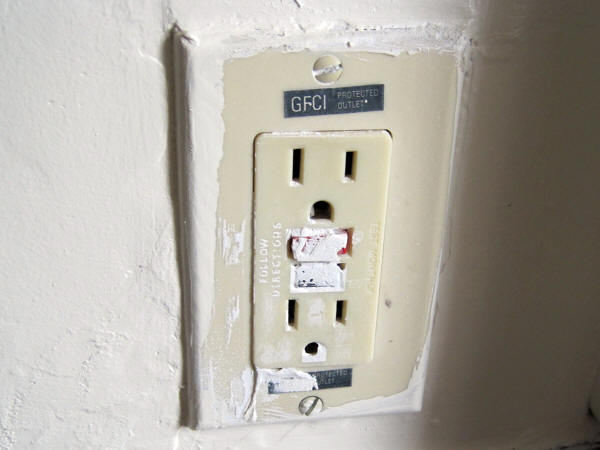
By our UPCS standards, if the buttons are inoperable, the GFI is inoperable, simple as that.
Inoperable GFIs are very high scoring defects. Compare to:
a missing window screen at 0.03 points
a bad refrigerator gasket at 0.2 points
a missing front door (yes, the entire front door of the apartment is missing) at about half a point
An inoperable GFI in a Unit is worth a FULL POINT - twice as much as a missing front door, five times as much as a refrigerator gasket, and about THIRTY SIX times as much a bad window screen.
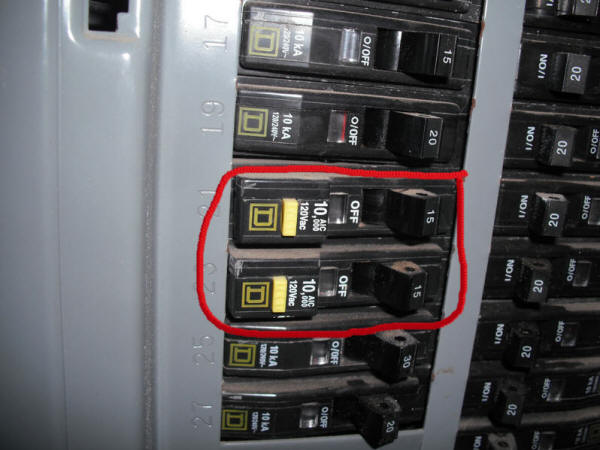
REAC also instructs inspectors to test AFCIs if present, and to cite them under GFI Inoperable if defective.
GFIs outdoors:
If an inoperable outdoor GFI belongs to a Unit that is being inspected, it goes under that Unit's defects.
If an inoperable outdoor GFI does not belong to a Unit that is in the sample (is not being inspected today) then it is cited as Bldg Exterior; Hazards; Other; Level 3
(Hazards Other is non-scoring)
| Missing Breakers/Fuses (Electrical System—Building Systems) |
| Deficiency: In a panel board, main panel board, or other electrical box containing circuit breakers, you see an open circuit breaker position that is not appropriately blanked off. |
| Level of Deficiency: |
| - Level 1: N/A |
| - Level 2: N/A |
| - Level 3: You see an open breaker port. |
| Missing Breakers/Fuses (Electrical System—Unit) |
| Deficiency: In a panel board, main panel board, or other electrical box that contains circuit breakers/fuses, you see an open circuit breaker position that is not appropriately blanked-off. |
| Level of Deficiency: |
| - Level 1: N/A |
| - Level 2: N/A |
| - Level 3: You see an open breaker port. |
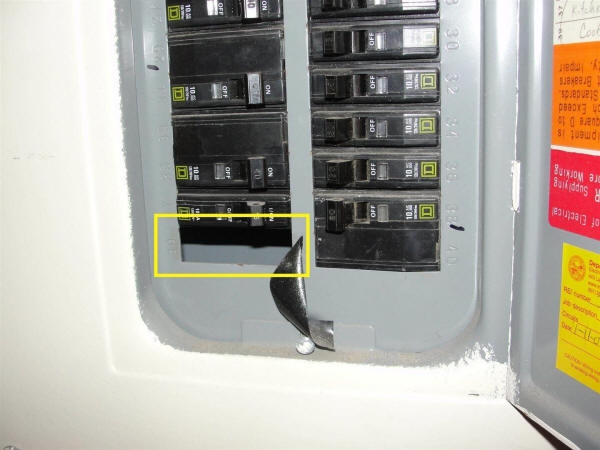
The proper way to close this hole is to install the blank or spacer made by the same company that made the panel box.
Don't buy generic one-size-fits-all blanks, buy the ones that actually fit properly!
If they are lose enough to pop out without using a tool, then there is still a defect. These need to fit very snugly and securely.
Or - alternative method - install a spare breaker in the space.
If you can't get either of these methods to work, then it is time to call in a qualified electrician instead of trying to fake it. This is too important to jury-rig and risk injury, death, fire, and lawsuit.
| Missing Covers (Electrical System—Building Systems) |
| Deficiency: The cover is missing from any electrical device box, panel box, switch gear box, or control panel with exposed electrical connections. |
| Note: If the accompanying POA identifies abandoned wiring: capped wires do not pose a risk, therefore, do not record this as a deficiency. |
| Level of Deficiency: |
| - Level 1: N/A |
| - Level 2: N/A |
| - Level 3: A cover is missing, which results in exposed visible electrical connections. |
| Missing Covers (Electrical System—Unit) |
| Deficiency: The cover is missing from any electrical device box, panel box, switch gear box, control panel, etc., with exposed electrical connections. |
| Level of Deficiency: |
| - Level 1: N/A |
| - Level 2: N/A |
| - Level 3: A cover is missing, and you see exposed electrical connections. |
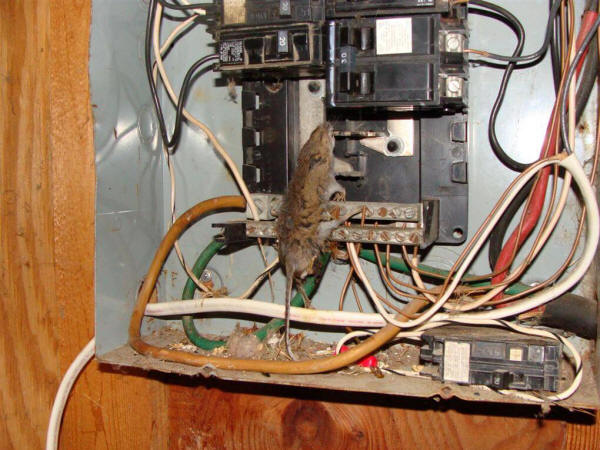
That's another reason we write up openings in electrical boxes, even when they are inside of secured maintenance areas - it's not just that we think anybody is dumb enough to put their finger in there.
The cover is missing on this box, so we call it Missing Covers.
If we were only writing up the missing knock-out, we would call it Exposed Wires/Open Panels.
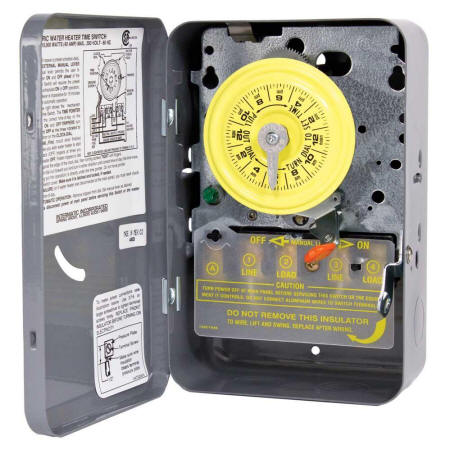
There is NO defect in this photo since the inner cover is intact
It is EXTREMELY common to find the inner cover missing from timer boxes.
That would be another Missing Covers citation.
By the way: IF this timer was secured - which means it requires a tool to open it - the REAC inspector would not look inside.
We are not obligated to unlock or open secured electrical boxes other than circuit breaker panels.
We must, however, provide access to breaker panels or else they get cited for Blocked Access.
| Outlets/Switches (Unit) |
| The receptacle connected to a power supply or method to control the flow of electricity. Includes 2 and 3 prong outlets, ground fault interrupters, pull cords, 2 and 3 pole switches and dimmer switches. |
| This inspectable item can have the following deficiencies: |
| Missing |
| Missing/Broken Cover Plates |
| Missing (Outlets/Switches—Unit) |
| Deficiency: An outlet, switch or both are missing. |
| Note: This does not apply to empty junction boxes that were not intended to contain an outlet or switch. |
| Level of Deficiency: |
| - Level 1: N/A |
| - Level 2: N/A |
| - Level 3: An outlet, switch or both are missing. |
| Comment: |
| - Level 3: If this condition is a health and safety concern, you must record it manually under “Electrical Hazards (Health and Safety).” |
| Missing/Broken Cover Plates (Outlets/Switches—Unit) |
| Deficiency: The flush plate used to cover the opening around a switch or outlet is damaged or missing. |
| Level of Deficiency: |
| - Level 1: An outlet or switch has a broken cover plate over a junction box, but this does not cause wires to be exposed. |
| - Level 2: N/A |
| - Level 3: A cover plate is missing, which causes wires to be exposed. |
The Missing/Damaged Cover Plate defect is considered Life Threatening at Level 3.
The Missing Outlet/Switch defect is NOT considered Life Threatening, the inspector must also cite Exposed Wires separately, to far great scoring impact.

| Lighting (Building Exterior) |
| System to provide illumination of building exteriors and surrounding grounds. Includes fixtures, lamps, stanchions, poles, supports, and electrical supply that are associated with the building itself. |
| Broken Fixtures/Bulbs (Lighting—Building Exterior) |
| Deficiency: Includes broken fixtures and bulbs. This deficiency covers all or part of the lighting associated with the building, including lighting attached to the building used to light the site. If you see lighting that is not directly attached to a specific building, assign it to the nearest building. |
| Note: If a damaged fixture or bulb presents a safety hazard, rate it as Level 3, and record it manually as a health and safety concern. This includes broken fixtures and bulbs that could fall on pedestrians or could lead to electrocution. |
| Level of Deficiency: |
| - Level 1: N/A |
| - Level 2: 20% to 50% of the lighting fixtures and bulbs surveyed are broken or missing, but this does not constitute an obvious safety hazard. |
| - Level 3: More than 50% of the lighting fixtures and bulbs surveyed are broken or missing. |
| -OR- |
| The condition constitutes an obvious safety hazard. |
| Comment: |
| - Level 3: If the condition is a health and safety concern, you must record it manually under “Electrical Hazards (Health and Safety).” |
| Lighting—Missing/Damaged/Inoperable Fixture (Common Areas) |
| Deficiency: Lighting fixture is damaged, not functional, or missing. |
| Note: To conserve energy during daytime or in low-use areas, many facilities use alternate lights that are triggered by either a sensor or a timer. If you see these kinds of lights, ask the accompanying POA to verify that these conservation systems are in place. |
| Level of Deficiency: |
| - Level 1: N/A |
| - Level 2: 20% to 50% of the permanent lighting fixtures are missing or damaged to the point where they do not function. This results in inadequate lighting in the common area(s). |
| - Level 3: More than 50% of the permanent lighting fixtures are missing or damaged to the point where they do not function. This results in inadequate lighting in the common area(s). |
| Lighting—Missing/Inoperable (Unit) |
| System to provide illumination to a room or area. Includes fixtures, lamps, and supporting accessories. |
| Deficiency: A lighting fixture is missing or does not function as it should. The malfunction may be in the total system or components, excluding light bulbs. |
| Level of Deficiency: |
| - Level 1: In 1 room in a unit, a permanent lighting fixture is missing or not functioning, and no other switched light source is functioning in the room. |
| - Level 2: In 2 rooms, a permanent lighting fixture is missing or not functioning, and no other switched light source is functioning in the rooms. |
| - Level 3: In more than 2 rooms, a permanent light fixture is missing or not functioning, and no other switched light sources are functioning in the rooms. |
If you study the Door definitions, you will find that they are almost identical for defects in each of those three Inspectable Areas.
Almost every type of defect that can be applied to more than one Inspectable Area has very similar or even identical definitions across those Areas.
Lighting is very different, having different defect names and definitions for each of the three Inspectable Areas, Exterior, Common Areas, and Units.
Lighting defects on the Exterior are called Broken Fixtures/Bulbs.
Lighting defects in Common Areas are called Missing/Damaged/Inoperable Fixture.
Lighting defects Units are called Missing/Inoperable.
The differences do not stop with the defect names - the definitions are also very different.

Notice that the definition mentions damaged/missing fixtures and bulbs.
A broken or missing fixture or globe is a defect. A broken or missing bulb is a defect.
Imagine that the light picture is one of ten outside lights that are "house lighting" all controlled by a photocell - not switched by a unit.
These would be Exterior lights. If 4 showed some form of damage, that would be 40%.
The defect would be Level 2
UNLESS - this caused a hazardous condition! If there is a hazard it becomes Level 3 regardless of percentage.

If the light is controlled by a switch inside the Unit - let's say this is the porch light for Unit 101 - the this is a Unit light.
Unit lights are NOT cited for damaged fixtures or bulbs.
In fact, if the bulb is burned out, it is not a defect if we can change the bulb and demonstrate that the fixture works.
Unit lighting defects go strictly by light fixture function - damaged or missing globes do not count.
Common Areas
Minor damage does not count - the light must be inoperable to count as a defect. The Level then goes by percentage of lights in an area that are damaged.
| Electrical Hazards (Health and Safety) |
| Any hazard that poses a risk of electrical fires, electrocution or spark/explosion. |
| The following deficiencies can be noted: |
| Exposed Wires/Open Panels |
| Water Leaks On or Near Electrical Equipment |
| Exposed Wires/Open Panels (Electrical Hazards—Health and Safety) |
| Deficiency: You see exposed bare wires or openings in electrical panels. |
| Note: |
| 1. If the accompanying property representative has identified abandoned wiring, capped wires do not pose a risk and should not be recorded as a deficiency. They must be enclosed in a junction box as defined in Note 2, below. |
| 2. If the capped wires are not properly enclosed in a junction box, record as a deficiency. |
| Water Leaks On or Near Electrical Equipment (Electrical Hazards—Health and Safety) |
| Deficiency: You see water leaking, puddling or ponding on or immediately near any electrical apparatus. This could pose a risk of fire, electrocution or explosion. |
If we have a missing cover or missing breaker, those conditions get cited under their own defect names - IF cited as a Systems, Common Areas, or Unit defect.
Other types of shock hazard are cited as Exposed Wires/Open Panels.
Site and Exterior do not have a Missing Covers or Missing Breakers defect.
All shock hazards on Site and Exterior are cited as Exposed Wires/Open Panels.
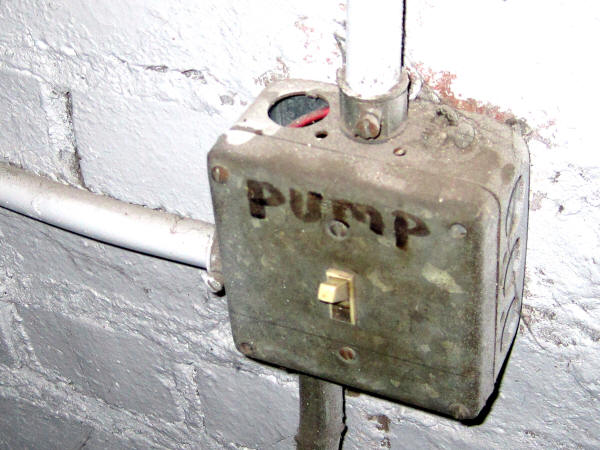
Gaps or loose covers are cited under Exposed Wires.
Missing switch or outlet covers have their own specific defect. (above)
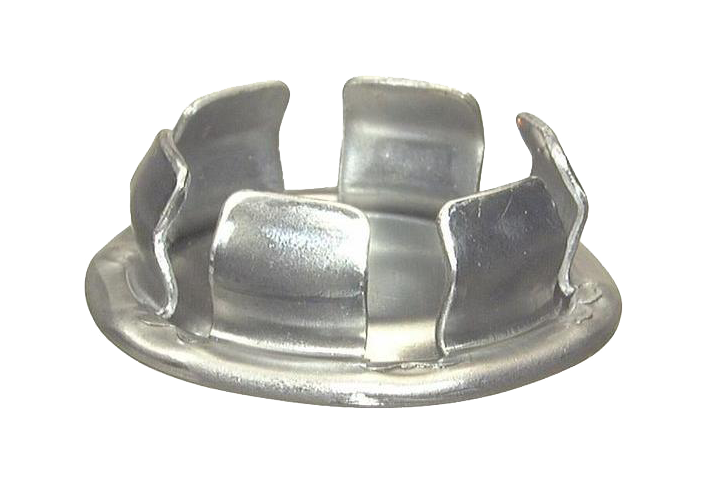
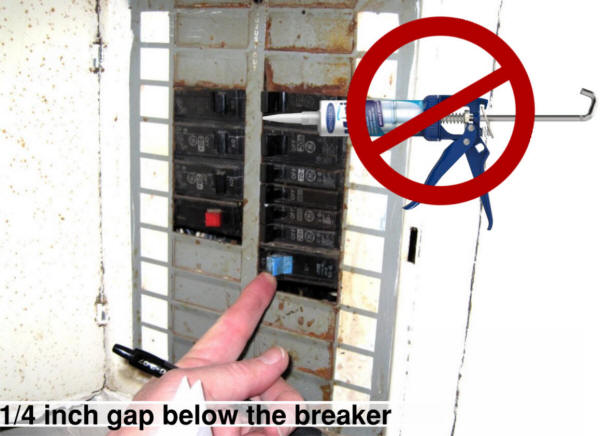
If every Unit was cited for Exposed Wires due to a gap or caulk in the breaker panel, the typical property would lose about 35 points ! !
A gap of 1/4 inch or more between breaker box cover and breakers is cited as Exposed Wires/Open Panels.
Somewhere along the line, over the last 18 years, someone came up with the not-so-bright idea of caulking along the breakers to assure that there is no gap.
REAC finally issued instructions to inspectors that they are to cite Exposed Wires if there is any caulk at all in the panel.
Let's say you had a 1/8 inch gap in your panels, so you caulked them all "just to be safe."
Under this new rule, every one of them will be cited for Exposed Wires.
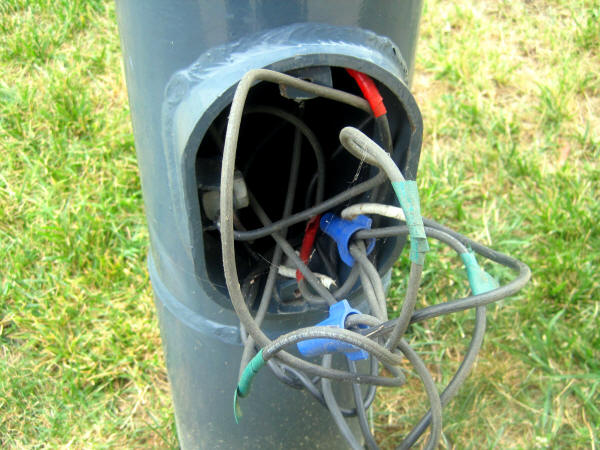
This is cited as Site; H&S; Exposed Wires; Level 3
Prior to the scoring caps instituted in 2013, this would have been worth about 11 or 12 points!
Today, with the caps, this is limited to 7.5 points still a big hit.
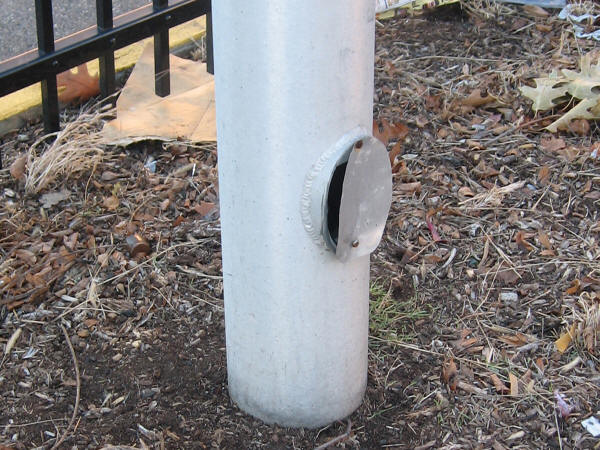
The maintenance person on this property tried to create his/her own covers out of thin sheet metal, like ductwork material.
This was very flimsy and easily bent.
The property was still cited for Exposed Wires and lost that 7.5 points.
THEN - as if it wasn't bad enough - the property was also cited for Sharp Edges and lost ANOTHER 5 points.
The clumsy attempt to fake it cost the property another 5 points - 12.5 points for just this problem pictured.
At the Systems level in a single building property, this is a ten point defect.
If there is water on the floor under ANYTHING electrical - lights, HVAC equipment, breaker panels, vending machines, anything at all, remember that it might aggravate the potential for a shock hazard.
This also applies to water dripping on top of an electrical device, or water inside of one - like a little water inside of an overhead light fixture.
Very simple....
Water + Electricity = Very BAD
| Electrical System (Building Systems) |
| Portion of the building system that safely provides electrical power throughout the building. Including equipment that provides control, protection, metering, and service. |
| Note: This does not include transformers or metering that belongs to the providing utility; equipment that is part of any emergency power generating system; or terminal equipment such as receptacles, switches, or panel boards that are located in the units or common areas. |
| This inspectable item can have the following deficiencies: |
| Blocked Access/Improper Storage |
| Burnt Breakers |
| Evidence of Leaks/Corrosion |
| Frayed Wiring |
| Missing Breakers/Fuses |
| Missing Covers |
| Blocked Access/Improper Storage (Electrical System—Building Systems) |
| Deficiency: A fixed obstruction or item of sufficient size and weight that can delay or prevent access to any panel board or main power switch in an emergency. |
| Note: If the panel board or main power switch is locked but authorized personnel can quickly gain access, do not record it as a deficiency. |
| Level of Deficiency: |
| - Level 1: N/A |
| - Level 2: N/A |
| - Level 3: One or more fixed items or items of sufficient size and weight impede access to the building system's electrical panel during an emergency. |
| Comment: |
| - Level 3: If the condition is a health and safety concern, you must record it manually under “Flammable Materials (Health and Safety).” |
| Burnt Breakers (Electrical System—Building Systems) |
| Deficiency: Breakers have carbon on the plastic body, or the plastic body is melted and scarred. |
| Level of Deficiency: |
| - Level 1: N/A |
| - Level 2: N/A |
| - Level 3: You see any carbon residue, melted breakers, or arcing scars. |
| Evidence of Leaks/Corrosion (Electrical System—Building Systems) |
| Deficiency: You see liquid stains, rust marks, or other signs of corrosion on electrical enclosures or hardware. |
| Note: Do not consider surface rust a deficiency if it does not affect the condition of the electrical enclosure. |
| Level of Deficiency: |
| - Level 1: N/A |
| - Level 2: N/A |
| - Level 3: Any corrosion that affects the condition of the components that carry current. |
| -OR- |
| Any stains or rust on the interior of electrical enclosures. |
| -OR- |
| Any evidence of water leaks in the enclosure or hardware. |
| Frayed Wiring (Electrical System—Building Systems) |
| Deficiency: You see nicks, abrasions, or fraying of the insulation that expose wires that conduct current. |
| Note: Do not consider this a deficiency for wires not intended to be insulated, such as grounding wires. |
| Level of Deficiency: |
| - Level 1: N/A |
| - Level 2: N/A |
| - Level 3: You see any nicks, abrasions, or fraying of the insulation that expose any conducting wire. |
| Comment: |
| - Level 3: If the condition is a health and safety concern, you must record it manually under “Electrical Hazards (Health and Safety).” |
| Missing Breakers/Fuses (Electrical System—Building Systems) |
| Deficiency: In a panel board, main panel board, or other electrical box containing circuit breakers, you see an open circuit breaker position that is not appropriately blanked off. |
| Level of Deficiency: |
| - Level 1: N/A |
| - Level 2: N/A |
| - Level 3: You see an open breaker port. |
| Missing Covers (Electrical System—Building Systems) |
| Deficiency: The cover is missing from any electrical device box, panel box, switch gear box, or control panel with exposed electrical connections. |
| Note: If the accompanying POA identifies abandoned wiring: capped wires do not pose a risk, therefore, do not record this as a deficiency. |
| Level of Deficiency: |
| - Level 1: N/A |
| - Level 2: N/A |
| - Level 3: A cover is missing, which results in exposed visible electrical connections. |
| Electrical System (Unit) |
| Portion of the unit that safely provides electrical power throughout the building. Includes equipment that provides control, protection, metering, and service. |
| This inspectable item can have the following deficiency: |
| Blocked Access to Electric Panel |
| Burnt Breakers |
| Evidence of Leaks Corrosion |
| sbull; Frayed Wiring |
| GFI Inoperable |
| Missing Breakers/Fuses |
| Missing Covers |
| Blocked Access to Electrical Panel (Electrical System—Unit) |
| Deficiency: A fixed obstruction or item of sufficient size and weight can delay or prevent access to any panel board switch in an emergency. |
| Note: If you see an item that is easy to remove, like a picture, do not note this as a deficient. |
| Level of Deficiency: |
| - Level 1: N/A |
| - Level 2: N/A |
| - Level 3: One or more fixed item(s) of sufficient size and weight can impede access to the unit's electrical panel during an emergency. |
| Burnt Breakers (Electrical System—Unit) |
| Deficiency: Breakers have carbon on the plastic body, or the plastic body is melted and scarred. |
| Level of Deficiency: |
| - Level 1: N/A |
| - Level 2: N/A |
| - Level 3: You see any carbon residue, melted breakers, or arcing scars. |
| Evidence of Leaks/Corrosion (Electrical System—Unit) |
| Deficiency: You see liquid stains, rust marks, or other signs of corrosion on electrical enclosures or hardware. |
| Note: Do not consider surface rust a deficiency if it does not affect the condition of the electrical enclosure. |
| Level of Deficiency: |
| - Level 1: N/A |
| - Level 2: N/A |
| - Level 3: Any corrosion that affects the condition of the components that carry electrical current. |
| -OR- |
| Any stains or rust on the interior of electrical enclosures. |
| -OR- |
| Any evidence of water leaks in the enclosure or hardware. |
| Frayed Wiring (Electrical System—Unit) |
| Deficiency: You see nicks, abrasions, or fraying of the insulation that expose wires that conduct current. |
| Note: Do not consider this a deficiency for wires that are not intended to be insulated, such as grounding wires. |
| Level of Deficiency: |
| - Level 1: N/A |
| - Level 2: N/A |
| - Level 3: You see any nicks, abrasions, or fraying of the insulation that expose any conducting wire. |
| Comment: |
| - Level 3: If the condition is a health and safety concern, you must record it manually under “Electrical Hazards (Health and Safety).” |
| GFI—Inoperable (Electrical System—Unit) |
| Deficiency: The GFI does not function. |
| Note: To determine whether the GFI is functioning, you must press the self-test button in the GFI unit. |
| Level of Deficiency: |
| - Level 1: N/A |
| - Level 2: N/A |
| - Level 3: The GFI does not function. |
| Comment: |
| - Level 3: If this condition is a health and safety concern, you must record it under “Electrical Hazards (Health and Safety).” |
| Missing Breakers/Fuses (Electrical System—Unit) |
| Deficiency: In a panel board, main panel board, or other electrical box that contains circuit breakers/fuses, you see an open circuit breaker position that is not appropriately blanked-off. |
| Level of Deficiency: |
| - Level 1: N/A |
| - Level 2: N/A |
| - Level 3: You see an open breaker port. |
| Missing Covers (Electrical System—Unit) |
| Deficiency: The cover is missing from any electrical device box, panel box, switch gear box, control panel, etc., with exposed electrical connections. |
| Level of Deficiency: |
| - Level 1: N/A |
| - Level 2: N/A |
| - Level 3: A cover is missing, and you see exposed electrical connections. |
A. Electrical (Applies to all inspectable areas.)
1. The inspector must record electrical deficiencies for electrical equipment that services more than one specific area of the building (e.g. main electrical panel) within Building Systems. Electrical deficiencies for electrical equipment that service a specific area of the building (e.g. community room, hallway, unit) must be recorded in their respective locations.
2. For the purposes of inspecting the property, all electrical components used to supply or control the supply of electricity to the building after the meter base are considered to belong to the property.
3. Do not inspect non-property owned utility boxes which include the meter base and supply service. Any observed Health and Safety defects are to be recorded, even if the utility box is non-property owned. Record them under [Health and Safety], [floor level (if applicable)], [Hazards], [Any Other - This does pose a risk of bodily injury] for that building or under [Site], [Health and Safety], [building or nearest building], [Hazards], [Any Other - This does pose a risk of bodily injury], as appropriate. If the Health and Safety defect is Life Threatening, it will not automatically appear on the EH&S report and will need to be manually tracked and recorded on the Notification of Exigent and Fire Safety Hazards Observed form at the end of that day’s inspection.
4. Any electrical panel/box that is designed to have an interior cover but the cover is missing, exposing bare wires/connections at the time of inspection, will be recorded as [Missing Covers, exposing electrical connections] in the appropriate Inspectable area.
5. Electrical panels (breaker/fuse boxes) that are secured at the time of inspection (except for disconnects and timer boxes) must be made accessible to the inspector for inspection. Any electrical panel (breaker/fuse box) that is not made accessible will be recorded as [Blocked access to electrical panel] in the appropriate Inspectable area.
6. Timer and disconnects (all electrical boxes other than breaker/fuse) that are not secured must be inspected, provided that doing so will not interrupt electrical service. Secured means that it requires the use of a tool. Tools can be items such as keys for locks, cutters, screwdrivers, or other similar instruments.
7. If an exterior disconnect or timer box that is not associated with any other specific inspectable area has no cover resulting in exposed bare wires or connections, the inspector is to record this as a deficiency at [Building Exterior], [Health and Safety], [Electrical Hazards], [Exposed bare wires], regardless of the design of the box. If the disconnect is associated with a specific sample unit, common area or system, the deficiency would be recorded in that area.
8. An opening or gap of more than ¼ inch between the breakers and the internal cover of an electrical panel is an electrical hazard. This deficiency is to be recorded under the applicable inspectable area as [Site, Building Exterior, Building Systems, Common Areas or Unit], [Health and Safety], [appropriate building, floor level or room location (if applicable)], [Electrical Hazards], [Openings in electrical panels], [The openings in the electrical panels are not properly covered].
9. Exposed bare wires are defined as: Non-insulated, high voltage (110V/220V or higher) conductors, connectors, and terminals. Fully insulated and capped conductors in an open junction box are not a defect. If exposed bare wire, un-insulated connectors, or open terminal connections are visible in an open junction box the inspector will select the Decision: “The exposed bare wires ARE capped BUT NOT enclosed in a secured electrical box OR ARE NOT capped” resulting in an Exigent Health & Safety defect under [Health and Safety], [Electrical Hazards], [Exposed bare wires].
B. Electrical: Systems
1. A missing elevator control panel cover must be recorded as [Systems], [Electrical System], [appropriate
floor level], [Missing cover, exposing electrical connections], [The electrical connections/wires are NOT
abandoned and capped] if the control panel was designed to have a cover. If a cover was not part of the
original design do not record a [Missing cover, exposing electrical connections] deficiency. However, if
the condition results in a life threatening situation, it will need to be recorded under [Systems], [Health and
Safety], [appropriate floor level], [Electrical Hazards], [Exposed bare wires], [The exposed bare wires ARE
capped BUT NOT enclosed in a secured electrical box OR ARE NOT capped]. Refer to the “Elevator
Inspection Policy” on page 25 prior to inspecting this equipment for deficiencies.
C. Electrical: Unit
1. Ground Fault Interrupter (GFI) - Inoperable is an automatic non-life threatening Health and Safety
deficiency when recorded. Disregard the comment in the definition that says, “If this condition is a health
and safety concern, you must record it as ‘Health and Safety: Electrical Hazards.”
2. GFI and Arc Fault Circuit Interrupter (AFCI) circuit breakers in electrical panel boxes must be tested by
pushing the test button to trip the breaker and resetting it. Deficiencies for inoperable AFCI circuit
breakers are to be recorded under [Unit], [Electrical System], [appropriate room location], [GFI does not
function when self-test button is pressed].
Effective date: May 23, 2016
• Inspection of Zip Ties: Should we test the integrity of plastic zip ties used to secure electrical enclosures? If the inspector sees a reason why they should be tested (e.g. sun baked, color is worn and faded, etc.) and when tested it breaks off in their hands and exposes bare electrical wiring or connections to be exposed, it is a defect. Otherwise, if the zip ties breaks when tested, but no bare wiring or connections are exposed, it is not a defect. This does not imply that every zip tie on every property has to be tested. Professional common sense must be applied for this situation on a case-by-case basis.
• Tripped Breakers: Is there a protocol to provide for the property to reset a tripped breaker for electrical devices or equipment?
Disposals: If the garbage disposal is tripped the inspector will allow the POA to press the reset button; if it works there is no deficiency. However, if the POA has to use any tools to make repairs to the garbage disposal, it is a defect.
GFIs: Must be tested and reset by the inspector per the CB.
Tripped Breaker: The POA can reset a tripped breaker as long as the breaker does not affect a life safety item such as a call-for-aid or smoke detector and there will be no deficiency observed.
Note: The inspector should never turn on any breaker that is found to be in the “off” or “tripped” position, since he/she is not sure what appliance or dangerous condition that it might create (e.g. turns on stove). The POA should be given the option to turn on any breakers that are off. The exception to this is the testing of the GFCI and AFCI protected breakers.
• If a garbage disposal is missing the plate underneath it, is this recorded as exposed wires? If it exposes bare wires and/or bare connections it is an electrical defect.
• Unplugged Appliances: Do we need to verify whether an unplugged appliance, such as a dryer, is in use or not? The Inspector must use their best judgement based for this situation.
• Can caulk be used anywhere in the panel/fuse box? No. This is a defect. The introduction of a foreign material into this type of device is not an acceptable repair. It shall be recorded in the appropriate inspectable area as an “H&S – Electrical Hazard” under “Opening in the electrical panel are not properly covered”.
Understanding HUD’s UPCS Protocol for Inspecting Electrical Devices
Revised Oct. 2010
PIH-REAC is providing the following information to assist in properly identifying and mitigating electrical
hazards that may exist on the property. This information presents common electrical hazards but does not
represent a complete listing of electrical hazards that may exist on a property.
There are multiple types of electrical devices that may be found on properties. The three most common are
shown below. They are:

The purpose of each device shown above:
(A) Timer - An electrical device that is used to automatically turn lighting, lawn sprinklers or other equipment
on/off at a predetermined time and/or date.
(B) Disconnect – An electrical device designed to interrupt the flow of electricity to a specific piece of
equipment or a specific area of a building and/or unit. While inspecting electrical equipment the
inspector will not touch or move the “cut‐off” handle.
(C) Panel - This electrical device contains either multiple breakers or fuses and is used to distribute power to
multiple locations within a building and/or unit.
The following photos show different scenarios for the device and the protocol, defect (if applicable), level (if
applicable), and the definition/guidance supporting the finding.
Full document is 10 pages
Download this Document Directly
or view the page for
Inspector Notices and User Guides